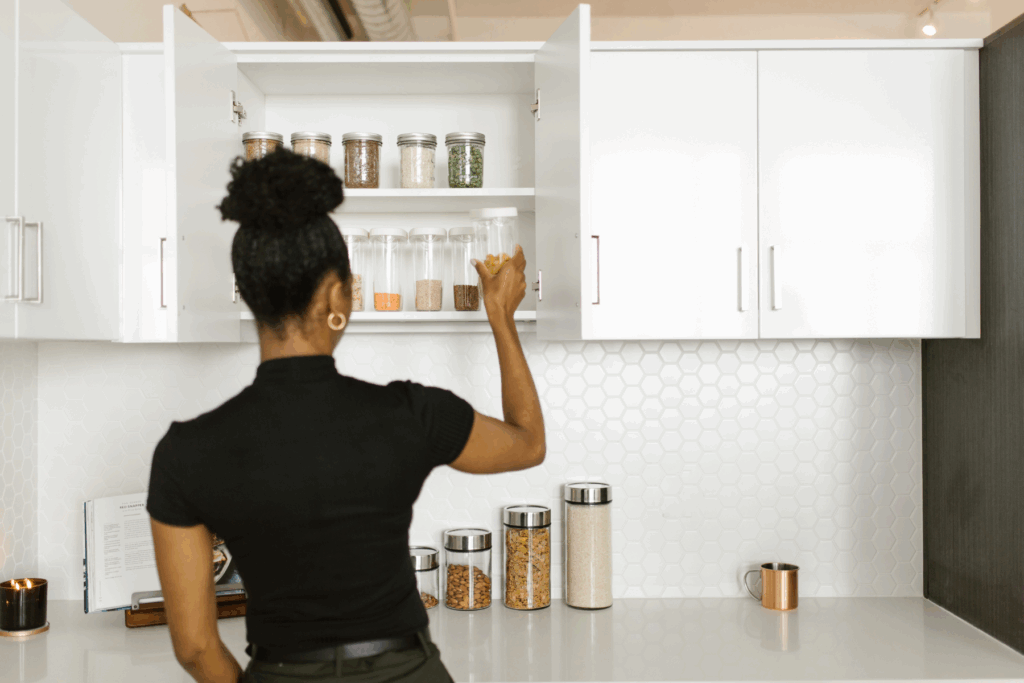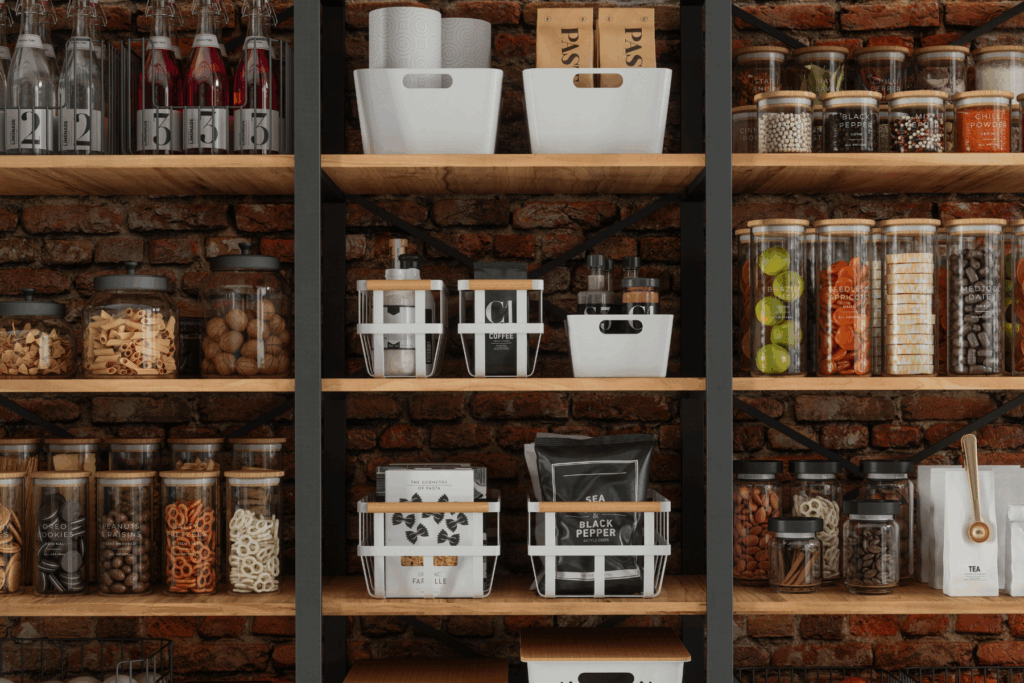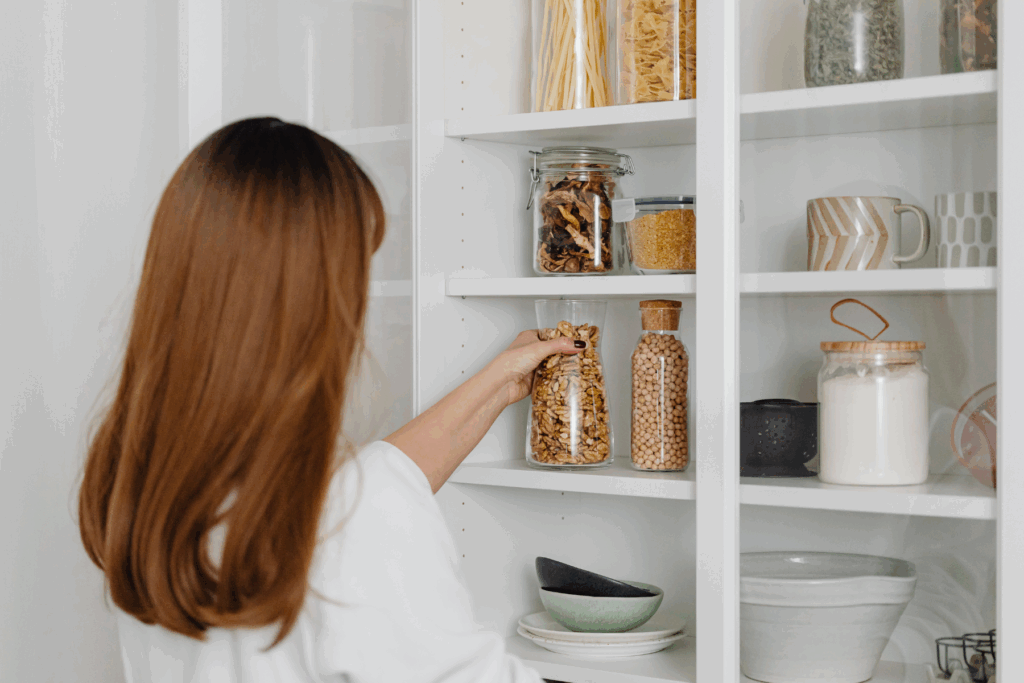


10 Toddler Pantry Staples I Always Have on Hand as a Pediatric Dietitian
Have you ever been here? It’s mealtime, and you have no idea what to feed your toddler. Having a well-stocked pantry can take away some of the stress of feeding littles. Here are some go-to pantry favorites from a Pediatric Dietitian.
This is not an all-inclusive list, but it contains foods I have found that help quickly create a balanced meal. Of course, I always have dairy products and eggs in the fridge and fresh fruits and vegetables on hand; this list is specifically pantry foods.
1. Oats
Oats are considered a whole grain and a good source of fiber. Whole grains have been linked to numerous health benefits, including reduced risk of heart disease and lower cholesterol.
Food Ideas:
– Serve them as oatmeal for breakfast with a nut butter and fruit.
– Use them to make mini muffins or apple, banana, carrot cookies.
– Blend them as the base for pancakes or waffles.
2. Canned Beans
Beans contain protein, non-heme iron, and fiber.
Food Ideas:
– Add them to quesadillas.
– Use them in soup or chili.
– Serve them plain- they are great to allow your toddler to pick up and self-feed or practice using a fork and spoon.
3. Whole Wheat or Chickpea Noodles
Whole wheat and chickpea noodles are a good source of carbohydrates. Carbohydrates are a toddler’s main source of energy. Chickpea noodles have some extra protein, fiber, and iron, making them more filling for sustained energy.
Food Ideas:
There are a variety of sauces to top these noodles with: marinara, pesto, roasted red pepper, or simply butter for some extra fat.
4. Canned Fruits and Vegetables
We are always looking for ways to increase our children’s fruit and vegetable intake. Canned fruits and vegetables are convenient and just as nutritious when you run out of fresh options.
Look for canned fruit packed in 100% fruit juice and low-sodium vegetables. Canned options can be used in many of the same ways as fresh.
Food Ideas:
– Use fruits to make a colorful yogurt parfait or blend them to make homemade popsicles.
– Vegetables can be added to soups, casseroles, or stir-fries.
– Canned pumpkin can be used to make yummy pumpkin pancakes that don’t just need to be enjoyed in the fall.
– Canned fruits and vegetables can simply be added as a side for a meal!
Be sure to avoid canned fruits and vegetables with added salt, artificial sweeteners, and added sugar. Check out our full blog post on sugar here.
5. Whole Wheat Bread
100% whole wheat or whole grain bread is a good source of carbohydrates and fiber for toddlers. Side note: Most children (and adults) in the U.S. are not consuming an adequate fiber intake.
When choosing a bread, wheat should be listed as the first ingredient in the ingredients list on the food label, and aim for no added sugar- most breads have 2-3 grams of added sugar per slice.
Food Ideas:
– Bread is great to have on hand for French toast or a quick sandwich.
– It is also a good vessel to add various toppings like mashed avocado, egg salad, canned salmon, hummus, or chia seed jam.
6. Canned Salmon/Tuna or Packets
Fish are a good source of protein and contain omega-3 fatty acids, which are so important for a toddler’s growing brain. It is important to choose low-mercury fish for children. See our fish blog post that goes in depth on seafood guidelines.
Food Ideas:
– The packets are a convenient size for lunches. Serve it with crackers, make a sandwich, or a fish patty.
7. Sprinkles- Hemp Hearts, Chia Seeds, Ground Flax
These are small but mighty- they pack a nutrient punch.
Chia seeds contain calcium, iron, and omega-3’s.
Hemp contains protein, omega-3’s and zinc.
Ground flax contains fiber, iron, and omega-3’s.
Food Ideas:
– Use chia seeds to make chia seed pudding or jam.
– Add them to yogurt, oatmeal, or smoothies.
– Top them on toast, waffles, or PB&J sandwiches. They are so versatile!
For tiny eaters, we love TinySprout superseed blends that are designed to enhance the nutrition of babies’ diets starting at six months of age. Affiliate link here.
8. Quinoa
Quinoa is a plant-based source of non-heme iron, a complex carbohydrate, complete protein, and a source of folate, magnesium, and thiamin.
Food Ideas:
– Use it as a replacement for rice or other starchy sides.
– It can be served for breakfast in place of oatmeal.
– Add it to soups or casseroles.
– Use it as the base to make fun grain bowls, allowing your toddler to pick various toppings like vegetables and beans.
9. Peanut Butter (Or Other Nut Butter)
Peanut butter and other nut butters provide fats, which should not be restricted for toddlers under the age of two. When choosing a nut butter, look for unsalted and unsweetened options. Of course, there is the classic peanut butter and jam sandwich, but it can be used in many other ways.
Food Ideas:
– Add it to smoothies or banana muffins.
– Top it on oatmeal or crackers.
– Mix it with yogurt for a yummy fruit dip.
– Use it to make a fun stir-fry sauce.
– For older children, serve with apples or celery for a filling snack.
10. Dried Fruit
This can include raisins, freeze-dried fruit, and apple chips, for example. Dried fruits are another way to help our kids meet their fiber and antioxidant needs. When choosing dried fruits, check the label for no-added-sugar options.
Food Ideas:
– Freeze-dried fruits can be crushed and added to oatmeal or yogurt for sweetness instead of using added sugar.
– Top the peanut butter toast with freeze-dried fruit for an extra crunch.
– Dried plums can be used to make homemade prune puree for toddlers struggling with constipation.
– Simply pair them with a protein source for a filling snack.
This list was created to help you feel more equipped to provide balanced meals to your toddler. Stock your pantry with these items and try out the serving suggestions!
Looking for more on this topic? Check out these additional resources: our free pantry staples and our pediatric grocery store staples guide.
Want more? My course is a 100% evidence-based approach to starting solids in a way that encourages a healthy dietary pattern from the start.
Check out the Starting Solids 101 Course now!
Access Course Now

Cinthia Scott is a Registered Dietitian (RD) and International Board Certified Lactation Consultant (IBCLC) with over 10 years experience in the field of dietetics. Cinthia focuses on ensuring optimal nutrition in the first 1000 days of life to ensure optimal growth and development as well as set the stage for long-term health. Cindy is an author, starting solids expert, and advocate for caregivers receiving evidence based education and support surrounding breastfeeding and starting solids.
Cinthia is co-author of the 101beforeone Starting Solids Book, “101beforeone -baby-led feeding cookbook,” and is the founder and owner of The Baby Dietitian LLC which is her private practice built to provide virtual 1:1 services for caregivers surrounding infant nutrition, toddler nutrition, and breastfeeding support. Cinthia is also the creator of the Starting Solids 101 Program which provides caregivers 1:1 support from a Pediatric Dietitian on how to provide optimal nutrition from the start and create healthy eating habits that will last their whole lifetime. To work with Cinthia, you can access her services here.
Cinthia provides tons of free information for parents on her social media accounts as well.
- Instagram: @The.Baby.Dietitian
- Tiktok: @The.Baby.Dietitian
